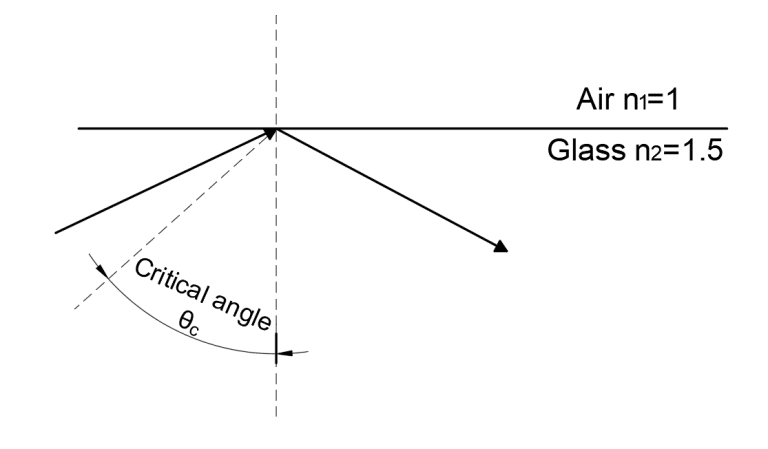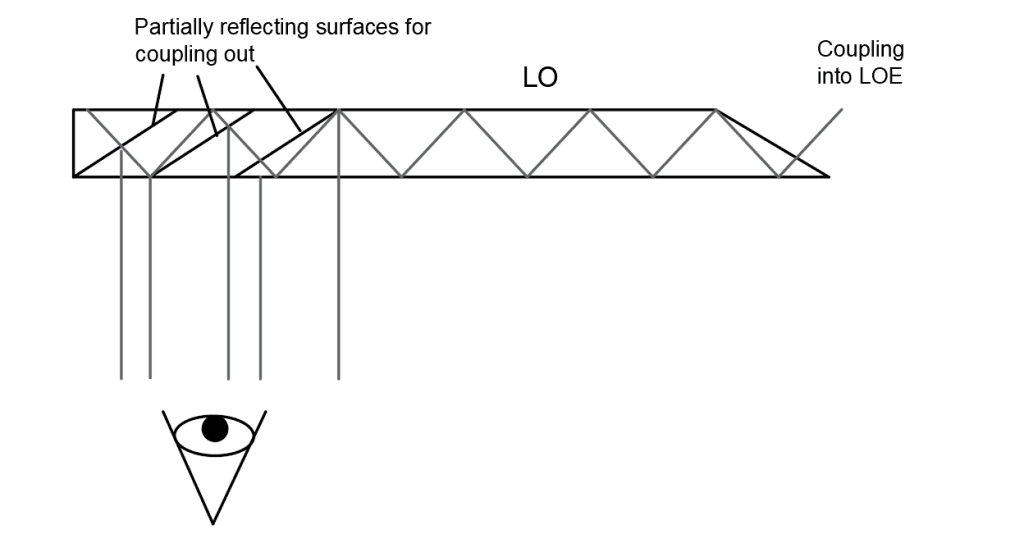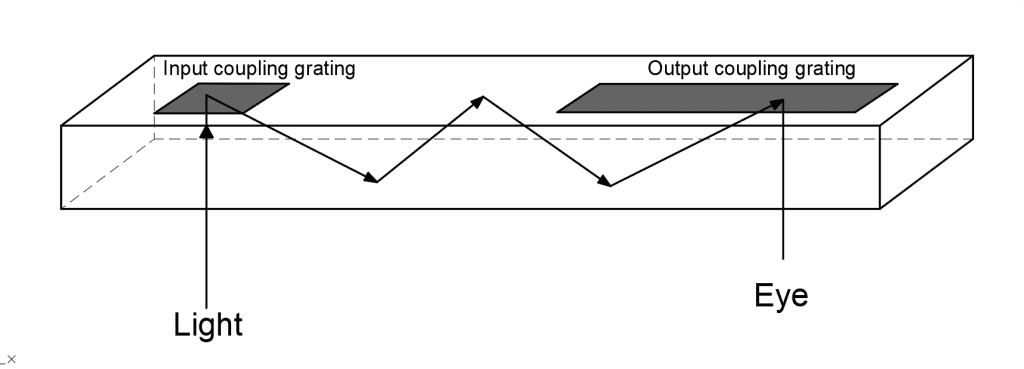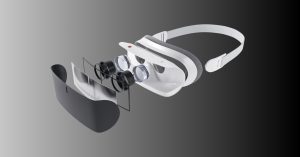Key Takeaways
- AR glasses utilize waveguide technology to overlay virtual images onto the real world, creating immersive experiences across sectors like healthcare, manufacturing, and defense.
- Optical waveguide designs enable high-quality AR displays, balancing transparency with an expansive field of view.
- Key types include geometric and diffracted waveguides, each offering distinct benefits in form factor and image quality.
- Total internal reflection (TIR) optimizes light control, making waveguide displays a promising AR solution for blending virtual content with real-world visibility.
Introduction to AR Glasses
Augmented reality (AR) glasses are advanced devices that integrate waveguide technology to seamlessly blend real-world visuals with computer-generated information, such as images, sounds, and videos. These virtual images are superimposed onto the real environment, providing users with a richer and more immersive experience. AR technology has found applications across various sectors, including defense, industrial manufacturing, healthcare, entertainment, and education, significantly enhancing how people interact with digital information in real-time across diverse professional and personal contexts.
AR optics leverage waveguide designs to project display content directly into the user’s line of sight, allowing them to see the physical world while engaging with virtual content. Key components of AR optics include the AR display, the eye, and an optical lens. Unlike virtual reality (VR), which places a display screen directly in front of the user’s eyes, AR glasses position the display near the temple or forehead to avoid obstructing real-world imaging. To ensure a high-quality visual experience, the lens magnifies the image, alters the optical path, and transmits it off-axis to the human eye while maximizing the field of view (FOV). Additionally, the lens must maintain transparency to ensure clear visibility of the real environment.
Types of AR Glasses
Various optical systems have been explored in AR glasses. The four main optical solutions currently in use include prisms, free-form surfaces, Birdbath optics, and optical waveguides.
- Prisms: This solution uses semi-transparent and semi-reflective prisms to project images to the eye, allowing users to simultaneously see real and virtual content, creating a blended experience. However, prism-based optics offer limited field of view, restricting their usage scenarios.
- Free-Form Surface: This approach employs reflective surfaces to project images. A variant, known as Birdbath, uses a polarizing beam splitter to reflect light from a free-form surface to the user’s eye. Though lightweight and cost-effective, it has lower transmittance due to multiple reflections and transmissions, impacting image brightness.
- Optical Waveguides: Optical waveguides are one of the most promising AR solutions, using total internal reflection (TIR) to transmit light through a glass substrate and deliver the image directly to the human eye.
Total Internal Reflection and Optical Waveguides
Optical waveguides provide thinness and high transparency, making them ideal for consumer AR applications. These waveguides use a polished glass substrate where light is coupled and retained through total internal reflection. By reflecting multiple times within the glass and then directing it to the human eye, the waveguide achieves off-axis image transmission. Its transparency also allows the real-world signal to reach the user’s eye, seamlessly layering virtual and real images.

Total Internal Reflection (TIR)
TIR is a common optical phenomenon. When light passes from a medium of higher density to one of lower density and the angle of incidence exceeds a certain critical angle, the light reflects entirely within the medium. TIR has various applications, including optical fibers, light rods, and prisms that utilize this effect to control light paths.


Different types of light guides
Types of Optical Waveguides in AR Glasses
The AR glasses optical waveguide solution includes a display and an optical lens, using TIR principles within the lens to transmit light. Light is directed into and out of the lens at specific angles, critical for achieving effective TIR. There are two main types of optical waveguides:
- Geometric Optical Waveguide: Mirrors guide light into the lens through reflection. A semi-reflective mirror outputs the optical signal while preserving real-world light transmission. Although this setup minimizes light loss and provides good imaging, it requires complex coatings and adhesion processes.
- Diffracted Optical Waveguide: In this approach, a grating structure inputs and outputs light. Gratings direct light efficiently by adjusting structural characteristics like period and depth. There are two main types of diffracted optical waveguides:
- Surface Relief Waveguide: Utilizes etched or embossed periodic gratings on the glass surface to produce a low-cost but lower-quality imaging solution.
- Volume Holographic Waveguide: Uses laser interference exposure to create periodic refractive index changes within the material, resulting in high diffraction efficiency and excellent image quality, though with a more complex production process.
These different waveguide types offer varying advantages and limitations, yet they continue to drive innovation in consumer AR and display technology.


In conclusion, the integration of advanced optical technologies in augmented reality glasses represents a significant leap forward in how we interact with digital content. By effectively merging the virtual and real worlds, AR glasses have the potential to revolutionize various industries and enhance everyday experiences. As this technology continues to evolve, ongoing innovations in optical waveguides and other optical solutions will play a crucial role in refining the performance and usability of AR systems. The future of augmented reality is bright, promising exciting developments that will reshape our understanding of information interaction and redefine the boundaries of human experience.
GREAT ARTICLE!
Share this article to gain insights from your connections!







